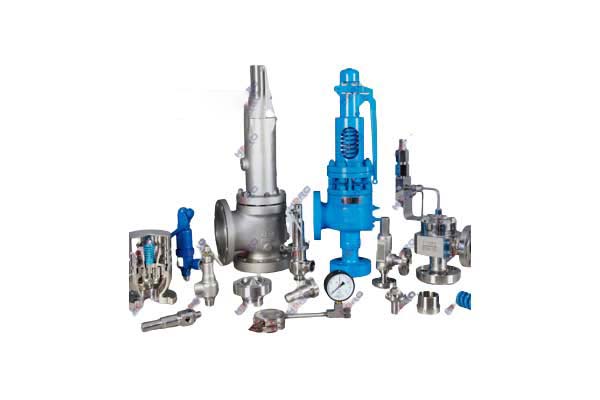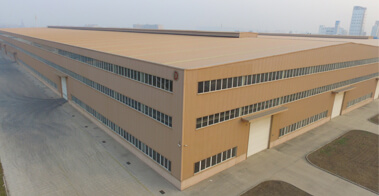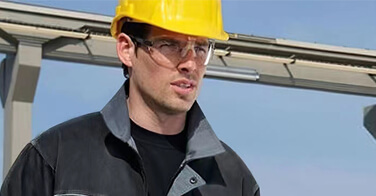In a boiler system, valves are used to open and close pipelines, control flow direction, and regulate and control the parameters (temperature, pressure, and flow) of the conveyed medium. Valves are control components in fluid delivery systems that perform functions such as cutoff, adjustment, flow diversion, prevention of reverse flow, pressure stabilization, flow distribution, or pressure relief. Valves can be divided into various models based on their specific functions, including safety valves, shut-off valves, check valves, regulating valves, and more.
Functions:
The function of the boiler safety valve is to ensure that the boiler operates under the specified steam pressure to avoid explosions. The steam safety valve is installed on the steam drum and the outlet header of the superheater to protect the evaporation heating surface and the superheater respectively. To prevent multiple safety valves from opening simultaneously and exhausting too much steam, the safety valve on the steam drum is divided into two types: control safety valve and working safety valve. The pressure of the control safety valve is lower than the cracking pressure of the working safety valve.
Classification:
There are two main types of safety valve structures: spring type and lever type. The seal between the valve disc and the valve seat of the spring type safety valve depends on the force of the spring; the lever type depends on the force of the lever and the weight. With the need for large capacity, there is another pulse safety valve, also known as a pilot safety valve, composed of a main safety valve and an auxiliary valve. When the medium pressure in the pipeline exceeds the specified pressure value, the auxiliary valve is opened first, and the medium enters the main safety valve along the conduit. The main safety valve is then opened to reduce the increased medium pressure.
The discharge of the safety valve depends on the caliber of the valve seat and the opening height of the disc. It can also be divided into two types: micro-opening type and full-opening type. The opening height of the small-opening type is 1/20 to 1/15 of the inner diameter of the valve seat, and the full-opening type is 1/4 to 1/3.
Steam boiler safety valves generally use full-open spring safety valves. The opening height of the full lift safety valve is greater than or equal to 1/4 of the flow channel diameter. The discharge area of the full-lift safety valve is the minimum cross-sectional area of the throat of the valve seat, and its action process belongs to the two-stage action type, which can only be fully opened by means of a lifting mechanism. The full lift safety valve is mainly used in gas medium applications.
Installation and Maintenance:
Notes:
-
(1) All safety valves should be installed vertically.
-
(2) There should be no resistance at the outlet of the safety valve to avoid pressure increase.
-
(3) The safety valve should be specially tested before installation, and its official tightness should be checked.
-
(4) Safety valves in use should be inspected regularly.
Requirements:
-
(1) For boilers with a rated evaporation greater than 0.5t/h, at least two safety valves should be installed; for boilers with a rated evaporation less than or equal to 0.5t/h, at least one safety valve should be installed. A safety valve must be installed at the outlet of the boiler drum and at the outlet of the steam superheater.
-
(2) The safety valve should be installed vertically at the highest position of the boiler and header. Between the safety valve and the drum or header, there should be no outlet pipes and valves for taking steam.
-
(3) The micro-opening safety valve must have a device to prevent the weight from moving by itself and a guide frame to limit the lever's derailment, and the spring-type safety valve must have a lifting handle and a device to prevent the adjustment screw from being twisted casually.
-
(4) For boilers with a rated steam pressure less than or equal to 3.82MPa, the safety valve throat diameter should not be less than 25mm; for boilers with a rated steam pressure greater than 3.82MPa, the safety valve throat diameter should not be less than 20mm.
-
(5) The cross-sectional area of the connecting pipe between the safety valve and the boiler should not be less than the inlet cross-sectional area of the safety valve. If several safety valves are installed together on a short pipe directly connected to the drum, the cross-sectional area of the short pipe should not be less than 1.25 times the steam exhaust area of all safety valves.
-
(6) The safety valve should generally be equipped with an exhaust pipe, which should lead directly to a safe place and have a sufficient cross-sectional area to ensure smooth exhaust. The bottom of the exhaust pipe of the safety valve should be equipped with a drain pipe connected to a safe place. Valves are not allowed to be installed on the upper part of the exhaust pipe and the drain pipe.







